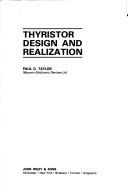| Listing 1 - 10 of 25 | << page >> |
Sort by
|
Book
ISBN: 9076900469 Year: 2002 Volume: *112 Publisher: Antwerpen Standaard
Abstract | Keywords | Export | Availability | Bookmark
 Loading...
Loading...Choose an application
- Reference Manager
- EndNote
- RefWorks (Direct export to RefWorks)
fossielen --- General palaeontology --- Fossielen --- Fossiles --- Rocks. Minerals --- gesteenten
Book
ISBN: 900216694X Year: 1990 Volume: vol *41 Publisher: Antwerpen Standaard Uitgeverij
Abstract | Keywords | Export | Availability | Bookmark
 Loading...
Loading...Choose an application
- Reference Manager
- EndNote
- RefWorks (Direct export to RefWorks)
16694-X
fossielen --- General palaeontology --- 576 --- paleontologie --- Dieren --- Dinosaurussen --- Fossielen --- Planten --- Prehistorie (Oertijd, Oudste tijden) --- 560 )* PALEONTOLOGIE --- 476.13 --- paleontologie, paleobotanie, paleozoölogie --- Paleontologie --- Evolutieleer --- informatieve jeugdliteratuur --- Fossiel --- Antropologie --- Plantkunde --- Geografie

ISBN: 0521842247 9780521842242 9780521114899 0521114896 9780511607370 9780511338342 0511338341 9780511252822 051125282X 9780511254277 051125427X 0511337248 9780511337246 0511607377 1281112925 9781281112927 1107163315 9786611112929 0511337787 0511336594 051156743X Year: 2004 Publisher: Cambridge, U.K. New York Cambridge University Press
Abstract | Keywords | Export | Availability | Bookmark
 Loading...
Loading...Choose an application
- Reference Manager
- EndNote
- RefWorks (Direct export to RefWorks)
Extinction is the ultimate fate of all biological species - over 99 percent of the species that have ever inhabited the Earth are now extinct. The long fossil record of life provides scientists with crucial information about when species became extinct, which species were most vulnerable to extinction, and what processes may have brought about extinctions in the geological past. Key aspects of extinctions in the history of life are here reviewed by six leading palaeontologists, providing a source text for geology and biology undergraduates as well as more advanced scholars. Topical issues such as the causes of mass extinctions and how animal and plant life has recovered from these cataclysmic events that have shaped biological evolution are dealt with. This helps us to view the biodiversity crisis in a broader context, and shows how large-scale extinctions have had profound and long-lasting effects on the Earth's biosphere.
Extinction (Biology) --- Extinction (Biologie) --- Extinction (Biology). --- Animals --- Extirpation (Biology) --- Biology --- Extinct animals --- Extinction --- Extirpation

ISBN: 047191178X 9780471911784 Year: 1987 Publisher: Chichester Wiley
Abstract | Keywords | Export | Availability | Bookmark
 Loading...
Loading...Choose an application
- Reference Manager
- EndNote
- RefWorks (Direct export to RefWorks)
Thyristors --- 621.387 --- Electric current rectifiers --- Electric switchgear --- Negative resistance devices --- Power semiconductors --- Gas-filled and vapour-filled discharge tubes (except for lighting). Ionization chambers. Ion counters --- 621.387 Gas-filled and vapour-filled discharge tubes (except for lighting). Ionization chambers. Ion counters
Book
ISBN: 9781118455005 1118455002 Year: 2020 Publisher: Hoboken, NJ John Wiley & Sons, Inc.
Abstract | Keywords | Export | Availability | Bookmark
 Loading...
Loading...Choose an application
- Reference Manager
- EndNote
- RefWorks (Direct export to RefWorks)
"Until the early 19th century, natural historians were puzzled by organisms at the time known as zoophytes: were they animals (zoo-), plants (-phyte), or something in-between? Perhaps they were even the common ancestors of animals and plants? Zoophytes as then conceived included sponges, corals and coralline algae, as well bryozoans, the subject of this book. The so-called 'zoophyte problem' greatly engaged Charles Darwin when he set sail from Plymouth Sound on board HMS Beagle in December 1831. Indeed, Darwin's first scientific paper, which was read by his mentor Robert Grant before both the Wernerian and Plinian societies when Darwin was a medical student at the University of Edinburgh, had concerned species of zoophytes we now know to be the bryozoans Flustra and Carbasea. And he made detailed observations of the intriguing behaviour of the peculiar 'bird-head' structures in bryozoans dredged off Patagonia during the Beagle voyage (Keynes 2003)"--
Bryozoa, Fossil --- Bryozoa --- Biology --- Ecology. --- Ecology --- Bryozoans --- Ectoprocta --- Ectoprocts --- Moss animals --- Polyzoa --- Sea mat --- Sea mats --- Sea moss (Bryozoa) --- Sea mosses (Bryozoa) --- Aquatic invertebrates --- Bilateria --- Polyzoa, Fossil --- Bilateria, Fossil --- Invertebrates, Fossil --- Bryozoa - Biology --- Bryozoa - Ecology
Book
ISBN: 9686026592 Year: 1992 Publisher: México, D.F. Altea
Abstract | Keywords | Export | Availability | Bookmark
 Loading...
Loading...Choose an application
- Reference Manager
- EndNote
- RefWorks (Direct export to RefWorks)
Book
Year: 1983 Publisher: London British Museum
Abstract | Keywords | Export | Availability | Bookmark
 Loading...
Loading...Choose an application
- Reference Manager
- EndNote
- RefWorks (Direct export to RefWorks)
Book
Year: 1986 Publisher: London British Museum
Abstract | Keywords | Export | Availability | Bookmark
 Loading...
Loading...Choose an application
- Reference Manager
- EndNote
- RefWorks (Direct export to RefWorks)
Book
Year: 1982 Publisher: London British Museum
Abstract | Keywords | Export | Availability | Bookmark
 Loading...
Loading...Choose an application
- Reference Manager
- EndNote
- RefWorks (Direct export to RefWorks)
Book
Year: 1981 Publisher: London British Museum
Abstract | Keywords | Export | Availability | Bookmark
 Loading...
Loading...Choose an application
- Reference Manager
- EndNote
- RefWorks (Direct export to RefWorks)
| Listing 1 - 10 of 25 | << page >> |
Sort by
|

 Search
Search Feedback
Feedback About UniCat
About UniCat  Help
Help News
News